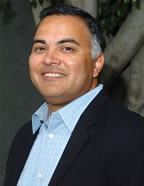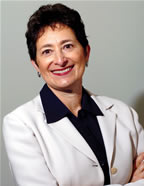Seeking Diversity
Faculty member studies reasons for ethnic underrepresentation among teachers
May 1, 2007
By Debra Cano Ramos
In high school, A.Y. “Fred” Ramirez liked sports more than academics. He focused on playing football and baseball and didn’t give much attention to his studies.
Teachers at his Catholic high school in Santa Barbara warned him that he’d never excel off the playing field. He even started to believe it himself, until a 10th-grade English teacher and coach took an interest in Ramirez and told him he could succeed academically.
“He took me under his wing,” said Ramirez, associate professor of secondary education, adding that his teacher “took the time to get to know me.”
By his senior year, Ramirez made the grade. After he turned in a poetry assignment, this teacher called him to his classroom and slapped the paper down on the desk.
“There was this big ‘A’ on it,” Ramirez recalled with a grin. He also made the dean’s list, and he cried when some of the same administrators who had been so discouraging about his academic prospects congratulated him on his achievements.
“One of my passions is to tell my students to ‘prove them wrong,’ ” said Ramirez, a San Diego State graduate who earned his doctorate in curriculum studies from Indiana University and began teaching at Cal State Fullerton in 1998. “What I am hoping is that my students will understand that every kid is capable of doing something great, and our job as teachers is to tap into that potential.”
Ramirez, a former high school teacher, said he believes there is a need for more kindergarten through 12th-grade teachers with the same cultural and ethnic backgrounds as their students to serve as role models and mentors.
To develop ways to recruit and retain people of different ethnicities, Ramirez has embarked on a research project to find out why Latinos, Asians and blacks are not choosing to become teachers.
Ramirez received a $20,000 Cal State Fullerton 2006-07 Mission and Goals Initiatives grant to conduct the study “Ethnic Minority Recruitment to Teacher Education.” He plans to complete his research in June.
Today, nationwide studies show that most teachers are white, while students are increasingly non-white, said Ramirez, who teaches multicultural education and professional development courses.
“As a whole, our nation is growing, and so are our ethnic populations. But, our diverse teaching force is dwindling,” the third-generation Latino said.
According to the National Teacher Recruitment Clearinghouse, ethnic minorities represent 14 percent of the teaching population nationwide while ethnic minority students compose 36 percent, said Victoria Costa, chair and professor of secondary education.
“One of the major concerns of our lifetime is how to find qualified and caring individuals to assist in the education of low-income immigrant and minority youth,” Costa said.
Ramirez wants to know why so few ethnic minorities enter the teaching profession. Moreover, he wants to implement creative ways to attract ethnically diverse people to teaching. Using focus groups of high school and college students, as well as teachers, he is determined to help underrepresented high school students pass the California Basic Skills test, required for acceptance into a teacher education program.
Ramirez expects his research will increase enrollment diversity in the College of Education.
He is not alone in this hope. Carmen Zuniga Dunlap, the college’s associate dean, agrees on the need to increase the number of students of diverse backgrounds to work in school settings.
“Our 2006 data shows ethnically diverse students on our campus who select careers to work in pre-K to grade 12 settings are relatively on par with post-baccalaureate students in other programs,” Zuniga Dunlap said, adding that these figures also closely reflect the 2000 census demographics for Orange County. “Hiring diverse faculty for tenure-track positions goes hand-in-hand with increasing our diverse student pool.”
Costa said that reasons for the diminishing number of minority teachers nationwide include increased career opportunities in other fields, challenging teaching environments and unsupportive faculty and staff.
The added cost of earning a credential (beyond a bachelor’s degree), undergoing two years of new-teacher training and unpaid student-teaching requirements also are deterrents, Ramirez added.
“I truly believe that the reasons have more to do with not knowing the benefits of the profession. Many folks choose a profession because their family members or friends are successful in that profession. They have built-in mentors and career advisers. Because the overall number of minority teachers is low, there is a lower number of those built-in mentors and advisers,” Costa said. “We need to create that critical mass of minority teachers who will then sustain the cycle.
“At Cal State Fullerton, we are building a critical mass of minority teachers who are happy and successful in teaching and who will mentor those who are younger. [Ramirez’s research] will provide baseline data and specific reasons for why folks in our service areas are choosing or not choosing teaching as a career.”



